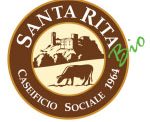Parmesan cheese
CONTROLLED FEEDING
Parmigiano Reggiano is produced exclusively in the provinces of Parma, Reggio Emilia, Modena, and Bologna to the left of the Reno River and Mantua to the right of the Po River: this is where the herds are concentrated where the cows are fed fodder produced in this area. It is first and foremost a microbiological characteristic that binds Parmigiano Reggiano to its area of origin. For the production of Parmigiano Reggiano, in fact, raw milk produced exclusively in this area is used. It is a special milk, characterized by a singular and intense bacterial activity of the indigenous microbial flora, influenced by environmental factors, especially the forages, grasses and hay of the area that constitute the main food of our cows. The feeding of the animals is taken care of in compliance with a regulation that prevents the use of silage fodder, fermented foods and animal meal. This is why Parmigiano Reggiano has only been able to be produced in this territory for almost a thousand years.


PRODUCTION.
During the production process, there are no external interventions (e.g., addition of enzyme additives or laboratory-selected bacteria) to change the activity of the bacteria. Only the cheesemaker during processing into cheese, thanks to the cheesemaking technique is able to enhance and prevail the lactic acid bacteria that operate the positive and expected lactic fermentations for successful cheese making.
Milk from the previous morning and evening is poured into typical copper cauldrons shaped like inverted bells. Each wheel of Parmigiano Reggiano requires about 550 liters of milk. The milk is coagulated slowly and naturally by the addition of rennet and the whey graft obtained from the previous day's processing and rich in natural milk enzymes.
It is at this point that fire enters the scene, for a cooking process that reaches 55 degrees centigrade, at the end of which the caseous granules precipitate to the bottom of the boiler, forming a single mass.
After about fifty minutes, the cheesemaker extracts the cheese mass that will give rise to twin wheels.
Cut into two parts and wrapped in typical linen cloth, the cheese is placed in a fascera that will give it its final shape.


IDENTIFICATION
Each form is assigned a casein plate with a unique and progressive alphanumeric code: it is the identity card that at any time and in any place makes it possible to identify its origin.
After a few hours, a special branding band engraves on the cheese wheel the month and year of production, the serial number that distinguishes the dairy, and the unmistakable dotted lettering around the circumference of the wheels.
SALTING
The wheels after a few days are immersed in a saturated solution of water and salt: this is salting by osmosis. With this last step, the Parmigiano Reggiano production cycle ends and the maturing period begins.


THE IMPORTANCE OF TIME
That of Parmigiano Reggiano is a long history, but it is also a slow one, flowing with the natural rhythm of the seasons.
In fact, the minimum aging period is 12 months, the longest of all PDO cheeses, and it is only at that point that it will be possible to say whether each individual wheel will be able to keep the name that was originally stamped on it and thus continue aging up to 24, 36, 40 months and beyond.
EXPERTISATION
After 12 months have passed, the Consortium's experts check all the cheeses through an examination called "expertizing": the cheeses are beaten with a gavel, and the attentive ear of the expert beater recognizes any internal defects that may interfere with quality.
The wheels that are found to be eligible are branded with the appropriate firebrand mark, thus becoming Parmigiano Reggiano. Molds that do not meet PDO requirements have their markings and recognition marks removed.


THE SELECTION MARKS
The selection examination identifies three categories of cheese:
- "Selected" Parmigiano Reggiano: the cheese that fully complies with the production specification. It is marked with the firebrand stamp.
- "Mezzanine" Parmesan cheese: cheese that has some minor or medium defects in the texture of the paste and/or on the rind, but without alterations in the typical organoleptic characteristics of the product. It is marked with the firebrand stamp, but can be distinguished by the parallel grooves that are indelibly traced on the heel of the wheel.
- Bleached cheese: cheese with major defects is de-qualified by removing the marks of origin by milling the rind (removing a few millimeters). Thus, this cheese cannot be called Parmigiano Reggiano and can no longer have any reference to the PDO.
Source and copyright: CONSORZIO DEL PARMIGIANO REGGIANO - www.https://www.parmigianoreggiano.com/

